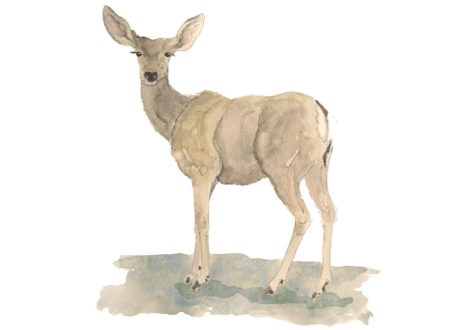
Animal Facts
Often seen in brushy areas, forests and open grasslands, mule deer eat mostly grasses and shrubs. Their large ears, resembling mule’s ears, are helpful in detecting approaching predators, of which they have a few: wolves, coyotes, cougars and bears. Bucks grow antlers beginning in springtime, and shed them late the following winter.
Mule deer migrate out of Yellowstone and the Jackson Hole area every winter, although some linger in a few areas.
Male mule deer can get as big as 250 pounds. Females can be as big as 175 pounds. Males grow antlers in spring and through summer and fall, and shed them in late winter or early spring. They mate in fall and give birth in spring.
Conservation Challenges
Mule deer are extremely susceptible to Chronic Wasting Disease, and as they migrate long distances to and from winter range, can easily transmit the disease. One of the best protections for deer and other ungulates is a healthy population of predators. Wolves, bears and cougars remove the sick animals, minimizing the spread of diseases among herds.
Mule deer also are susceptible to severe winters, and in some winters, losses can be substantial. The Wyoming Game and Fish Department sometimes arranges for emergency feeding, primarily of hay. But because mule deer digestive systems are not very adaptable, it is difficult for them to switch from one food source to another. Sometimes feeding on a different food source actually can cause death.
